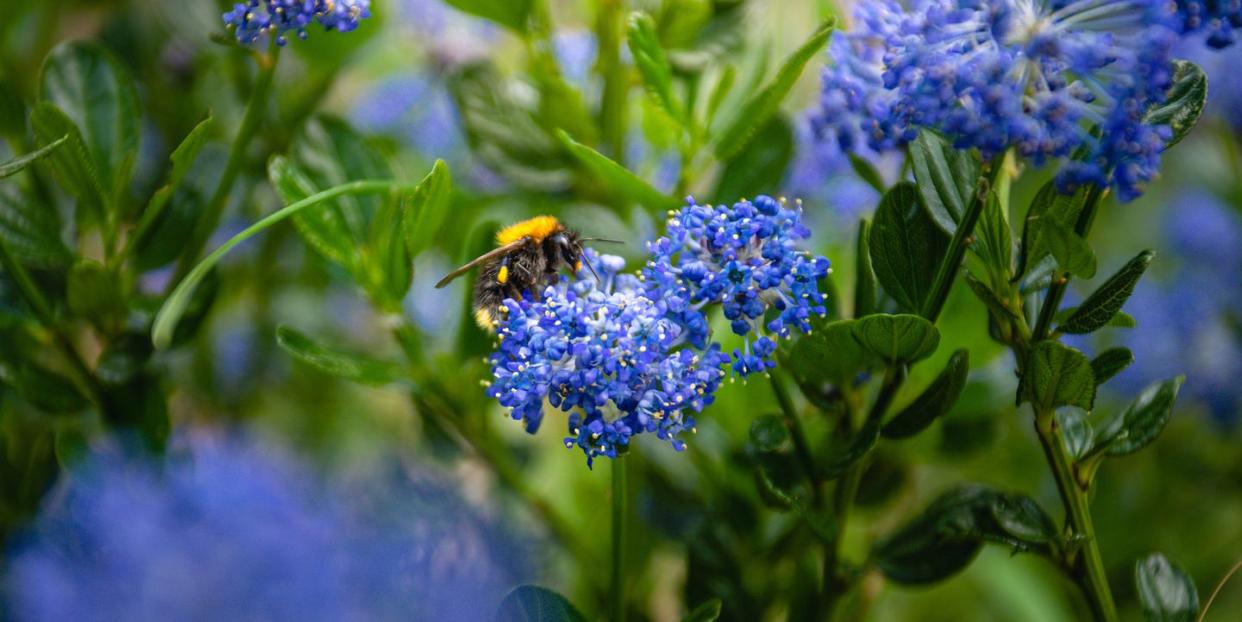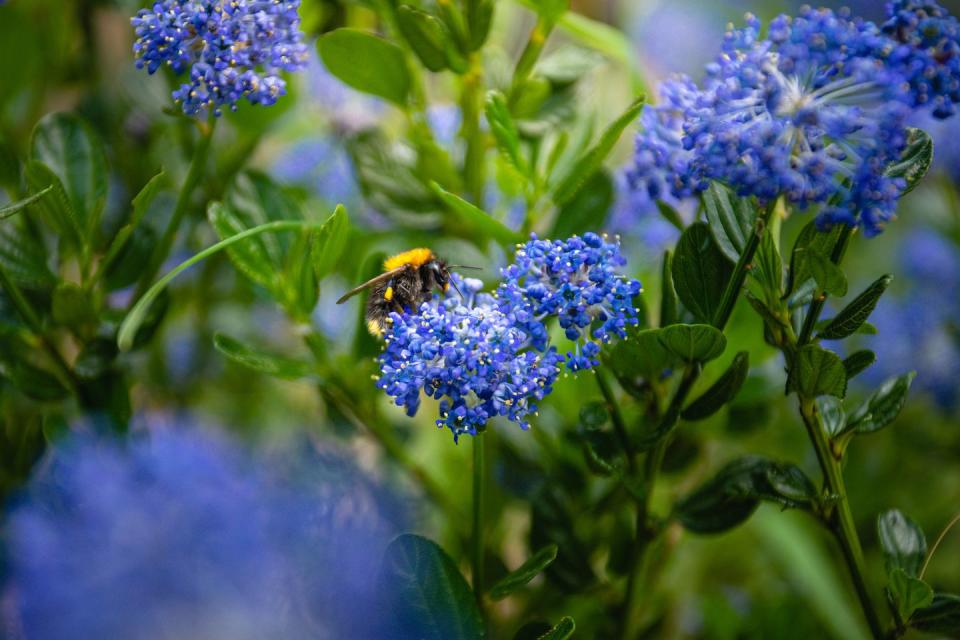The best colours to attract bees to your garden

Bees are important for biodiversity and the economy but populations are declining in the UK: statistics show that in 24 years, the UK has 13 lost species of bees with a further 35 considered under threat of extinction.
With paint brand Cuprinol Garden Shades having just appointed their very first resident beekeeper, in collaboration with pollinator protection initiative Bee1, the team are sharing some of their top tips for creating a wildlife haven for bees in your garden.
This follows research which shows that bees are attracted to bright colours, as they serve as visual cues for them. ‘There’s been great research into the fact bees are very perceptive to colour, and we know this through centuries of natural selection; the gorgeous flowers in our gardens have evolved to be as bright and beautiful as possible in order to attract such pollinators,’ explains Mark Douglas, founder of Bee1 and Cuprinol Garden Shades’ new resident beekeeper.
And since using colour – in the form of paint – they have seen an 'uplift in the number of happy bees calling our hives home,' says Mark. These hives, which are home to around 10,000 honeybees, could potentially pollinate around 200 million plants, flowers and fruit within a three mile radius of his farm, making a noticeable difference to the overall landscape.
So, what can we do in our own gardens and outdoor spaces?
Resist the urge to cut the grass

We know how tempting it can be to keep your grass freshly cut, particularly during the summer months, but here's why you shouldn't: 'Research has found that mowing grass less frequently (such as every two weeks) offers the prime landscape for a large bee population, thanks to their being plenty of lawn flowers and shorter grass allowing for easier access to them,' says Mark.
‘In the last 75 years bees and butterflies have lost 97 per cent of their natural habitat but we can prevent further loss by growing our own wildflower garden,’ he continues. Something as simple as leaving dandelions – which are a big source of nectar for bees – alone can help. You can buy a Seedbomb or Bee Bomb, which contain a combination of wildflower seeds, soil and clay, that will begin to transform your garden into a much more hospitable environment for pollinators and wildlife more generally.
Use brightly coloured plants and paint

With bees being attracted to bright and beautiful colours, it’s well worth planting with this in mind. ‘Bees best perceive blues, green and violets,' says Marianne Shillingford, Cuprinol's creative director. Painting your fence, brickwork or even your garden furniture in bright and bold hues can also help to create a space that bees flock to.
Become a bee first aider
We’ve probably all encountered a bee that looks like it's struggling, but a combination of sugar and water can help. ‘With their natural food sources gradually becoming more difficult to come by, this simple solution can work wonders for bees in need of an energy fix,’ reveals Mark.
Apps like Spot-A-Bee will help users to get a better understanding of the environment that bees like. ‘This app allows you to observe and document any flowers, shrubs, climbers or trees and the bees on them,’ Mark explains. It includes plenty of useful information on plants, as well as the most common bee species that you might find in the UK.
Install bee hotels
‘You don’t need big hives like Mark’s in your gardens to provide a cosy place for bees to stay,’ Marianne outlines. You can purchase or make your own bug and bee hotels, giving a place for pollinators to nest and rest.

‘Bees can tuck up in their holes from the time it's laid as an egg, until it's ready to fly out into the big wide world. They also make for ideal winter homes for solitary bees,’ Marianne adds.
You can paint your bee hotel a vibrant colour; it'll make the wooden hotels instantly recognisable to pollinators and keep them coming back for more, as well as adding some immediate interest to your garden.
Crucially, ensure that any hives, bug hotels, or alternative bug residencies are painted on the outside and are fully dried before giving access to bugs for use. And don't paint if these objects are already in use by bugs.
Follow House Beautiful on TikTok and Instagram.
You Might Also Like



